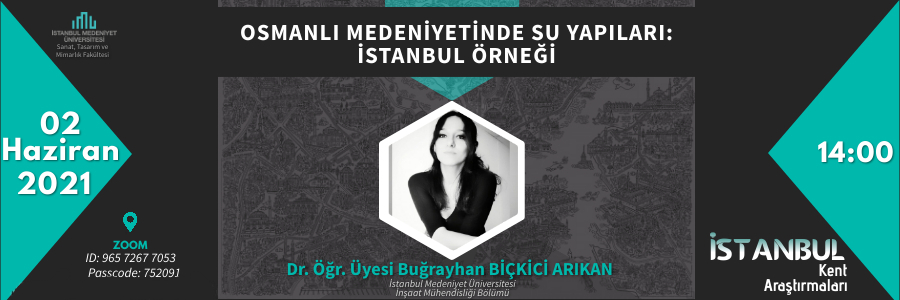The 8th seminar of the “Istanbul Urban Studies” seminar series organized by the Department of Urban and Regional Planning of Istanbul Medeniyet University was held online on 2nd June 2021. The seminar was moderated by Lect. Dr. Ayşegül CAN of the Department of Urban and Regional Planning and hosted Asst. Prof. Buğrayhan BİÇKİCİ ARIKAN of IMU Department of Civil Engineering with a presentation titled “Osmanlı Devletinde Su Yapıları: İstanbul Örneği” (Water Structures in the Ottoman Empire: The Case of Istanbul).
BİÇKİCİ ARIKAN started her presentation by expressing that Istanbul abounding with water-related structures has struggled with water supply issues since the beginning of its history. She also mentioned that Istanbul has limited water resources and thus always had to provide fresh water supply systems from the surrounding regions. In this sense, Istanbul is one of the leading cities in water and water-related architectural structures, which have played a significant role in the city’s history. In her study, BİÇKİCİ ARIKAN classified the types of water architecture examples and noted that they possess an artistic value that is beyond their functional merits. The most notable waqf buildings created by the Ottoman Empire were usually water-related structures, which give Istanbul a distinctive character. She further added that some of these structures that have witnessed different historical periods are still in use and make Istanbul an important part of universal cultural heritage.
The q/a session that followed included a discussion on which of the water structures still function properly and whether any of them have been destroyed as a result of urbanization initiatives. The participants also discussed the possibility of water shortage and drought risk for Istanbul and how it can be managed.


